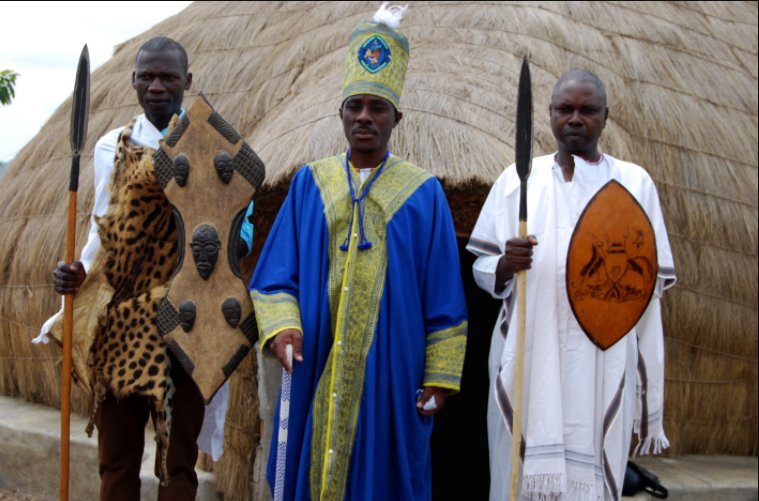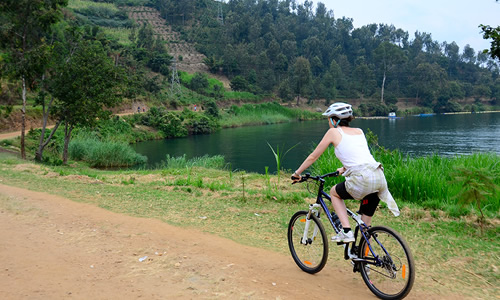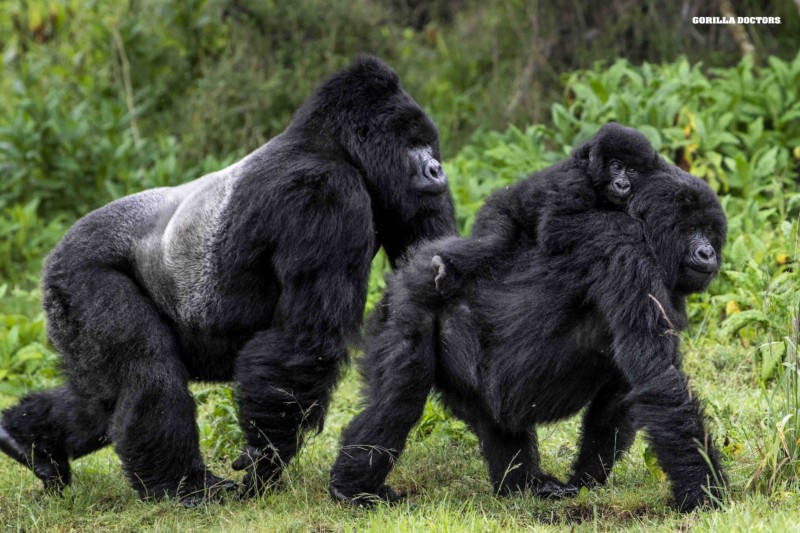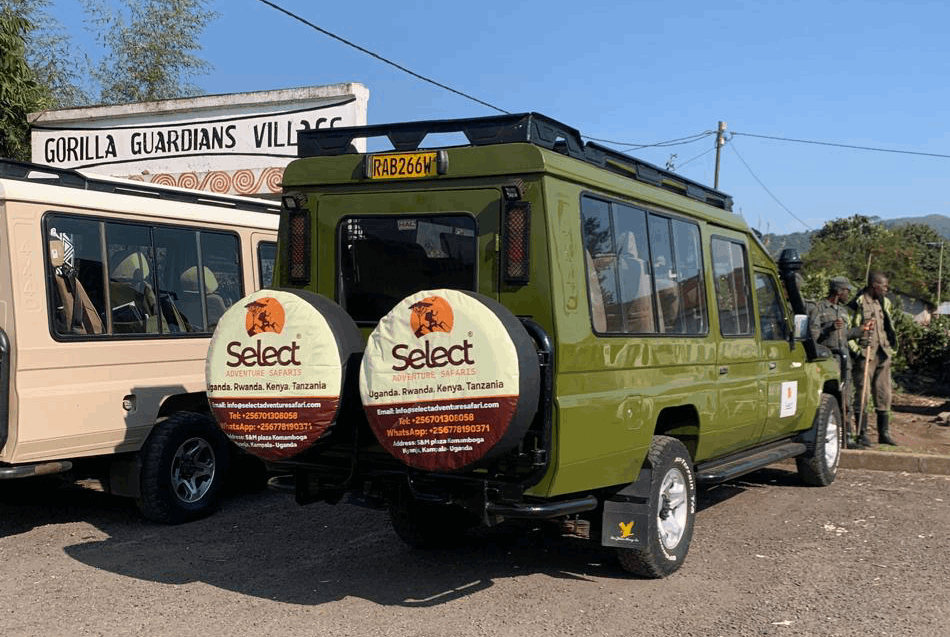The Banyankole / Ankole tribe of Uganda
The Banyankole / Ankole tribe of Uganda : Located in present-day Uganda’s south-western region, east of Lake Edward, was the kingdom of Ankole (Runyankore: Nkore), which was a typical Bantu state. formerly under the control of a monarch known as the Mugabe. The government of President Milton Obote legally abolished the dominion or simply kingship in 1967, and it has not been officially reinstated since then. The Banyankole are a frequent name for the inhabitants of Ankole (singular: Munyankole)
The Ankole agreement was signed on October 25, 1901, officially incorporating the Ankole kingdom into the British Protectorate of Uganda.
It is claimed that the name Nkore (formerly Kaaro-Karungi) was adopted in the 17th century after the disastrous assault of Kaaro-Karungi by Chawaali, the then Omukama (king) of Bunyoro-Kitara. The term “Ankole” was coined by British colonialists to describe the unified kingdom that emerged following the defeat of the smaller, self-governing states of Igara, Sheema, Buhweju, and a portion of Mpororo.
As of now, you can find Banyankole people living in the following areas of Uganda: Bushenyi District, Buhweju District, Mitooma District, Rubirizi District, Sheema District, Ntungamo District, Mbarara District, Kiruhura District, Ibanda District, and Isingiro District.
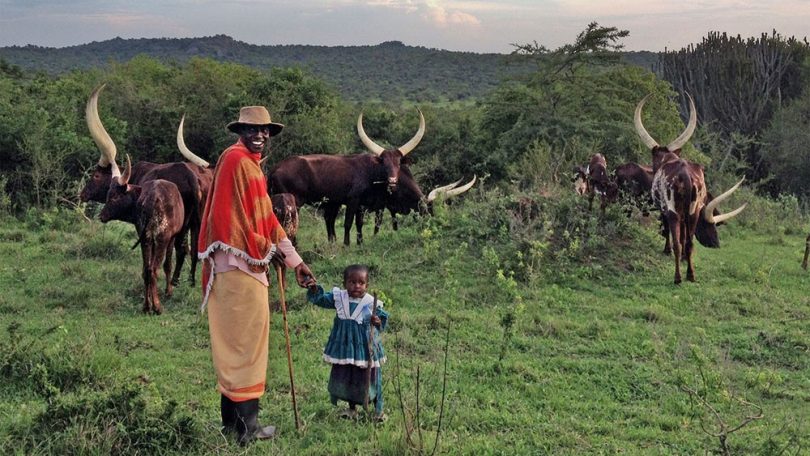
Where the Ankole came from:
Ruhanga (creator), the primary king of the Ankole, is said to have descended from heaven to control the world. Three sons, named Kairu, Kakama, and Kahima, are said to have accompanied Ruhanga in his life.
One of Ruhanga’s sons was supposedly chosen as the future king through a test. The boys had to spend the night with pots of milk on their laps as part of the test. Kakama, the youngest son, is said to have finished the assignment first, followed by Kahima, and finally Kairu, the eldest. After allegedly announcing that his brothers Kairu and Kahima will serve their brother Kakama, Ruhanga ascended back to heaven.
The Hima (or Bahima) were a nomadic people that came to dominate the Iru, who were farmers (also referred to as Bairu). Intimate ties between the Hima and Iru facilitated trade and symbolic recognition, but the two groups were treated as unequal partners. prohibitions against intermarriage ensured that the two communities could keep their distinct identities and treated any marriages between them as null and void.
Ankole Provinces
There were ten separate counties in the kingdom of Ankole. They’ve recently become split into several political groups. These counties were originally: Kashari, Isingiro, Rwampara, Nyabushozi, Ibanda, Sheema, Kajjara, Bunyaruguru, Igara, and Buhweju
Ankole Kingdom’s Political Structure
The King (Omugabe) ran centralized government with the help of regional over seers or simply chiefs and a powerful Minister (Enganzi). The Bahinda family, of which the Abagabe were monarchs, was the royal family.
The Omugabe frequently presided over court proceedings, mediating situations involving everything from the whereabouts of 50 cows to the desertion of men by their wives. The Enganzi was the Mugabe’s chosen chief and had final say in any disagreements that arose. Only the Enganzi were allowed access to Mugabe’s private quarters at any time. The Omugabe would present a neighborhood leader with several hundred cows as a gift upon his appointment. Common cattle herders were unrestricted in their migration patterns as they sought out fertile lands and capable rulers. Tribal chiefs frequently convened courts to settle petty disputes. yearly agents from the Mugabe regime traversed the dominion in pursuit of taxation in the form of 1 cow for 50 cows at a homestead. Taxation was not, however, within their purview.
Nkokonjeru (Ankole Royal Tombs) is the burial site of several of the 23 monarchs who ruled the Ankole Kingdom.
As a Bantu language, the Banyankole refer to their own tongue as Runyankole. It is classified as Niger-Kordofanian. Many of the nouns in these languages are built up from smaller parts called prefixes, infixes, and suffixes. The roots of words by themselves are meaningless. As an example, the ethnos is called Ba nyankole since the prefix ba denotes the plural. The prefix mu carries the idea of uniqueness, hence a private person could be called a Mu nyankole. Ki nyankole is a prefix used to refer to things that are related to or owned by the Banyankole. The nomadic Banyankole are known to as Ba hima, and a soldier in their ranks is called a Mu hima. The Bairu are the agricultural Banyankole, and the individual can be a Muiru.
The Ankole Kingdom’s societal divisions
The Bahima (cattle keepers) and the Bairu (commoners) were the two primary male social strata of Banyankole culture (agriculturalists). In comparison to the Bairu, the Bahima were seen as superior. Both tribes may trace their roots back to the same common ancestor. This two-tiered society relied on both pastoralism and agriculture. The Bairu and the Bahima are both represented by their respective clans among the two social strata. Most people believed that a hoe was what defined a mwiru (plural: Bairu) and cattle were what defined a Muhima (plural: Bahima). However, this type of belief wasn’t very accurate because one merely acquiring cows wouldn’t immediately transform him from a Mwiru into a Muhima nor would the loss of cows transform a Muhima into a Mwiru. One who owned few cattle would be called a Murasi if he was a Muhima. One who owned cattle was called a Mwambari if he was a Muiru.
The two groups lived together and existed in co-dependence. The Bairu exchanged cattle products with Bahima and therefore the Bahima equally received agricultural goods from the Bairu. This was due to the need for milk, meat, hides and other cattle products by the Bairu whereas the Bahima also needed agricultural products as well as the local brewed beer.
Clothing
The code during this region differentiated rank and gender. Traditionally, chiefs wore long robes of cow hide while the themes wore a little portion of the cow hide over their shoulders. the ladies subjects wore skin hide cloths and also covered their faces while publicly. If on a journey or when traveling to go to friends, Bahima women were carried during a cow skin-covered litter for fear that walking would tire them. within the times however, cotton replaced cow hide as a way of body attire. On special occasions, a Munyankore man might wear an extended white cotton robe with a Western-style sports coat over it. A hat resembling a fez can also be worn. Women cover their bodies, heads, and partially their faces with bright colored cloth.
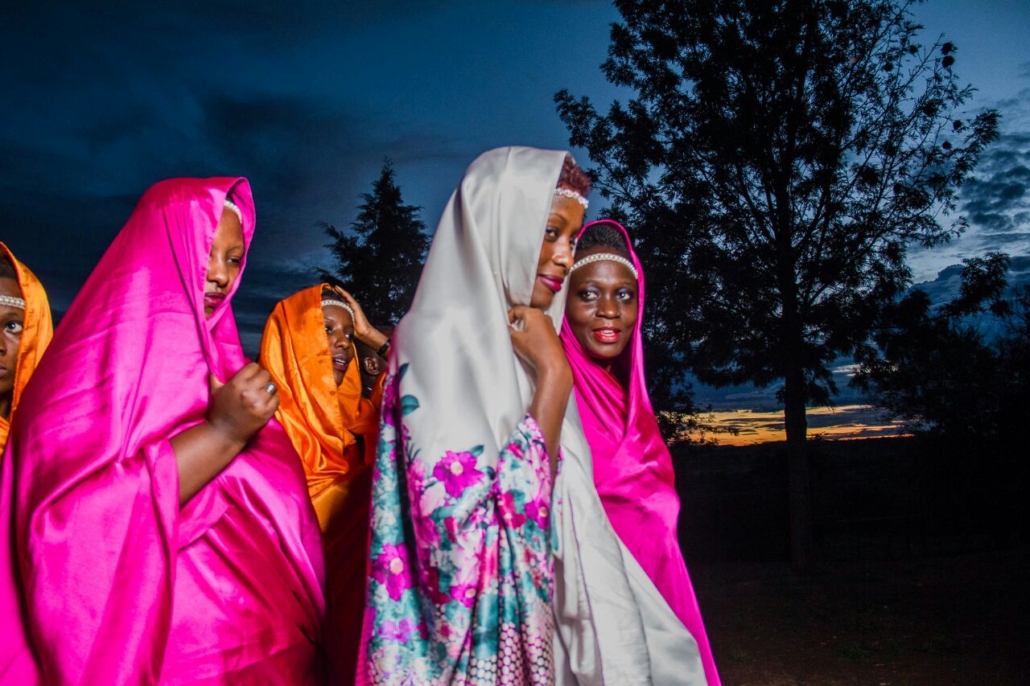
Entereko
The Banyankole brewed beer by squeezing ripe bananas and mixing the resulting juice with water and sorghum then letting the mixture ferment overnight during a wooden trough called obwato. This brewed beer was a requirement at every social communal work or the other function.
Whenever beer was made, the Banyankole had what they called entereko where the beer was stored. If someone brewed beer, he had to order some for the neighbors as a symbol of belonging and good neighborliness. The brewed beer was called Entereko.
when someone brewed beer in the community after one or two days, he would invite his neighbors over and serve them the reserved beer. This practice was so important that anyone who did not suits it had been considered a nasty neighbor. He wouldn’t be accorded the services of the neighbors within the event of need.
During the service of the entereko, the lads would discuss important matters of substance that affected their area especially , the dominion and beyond. There would be tons of merry making including dancing. the normal dance among the Banyankole was called ekyitaguriro and men and ladies would participate in it. The Bahima also sang and made competitive recitals connected with valor in wars of offences and defense and about cattle.
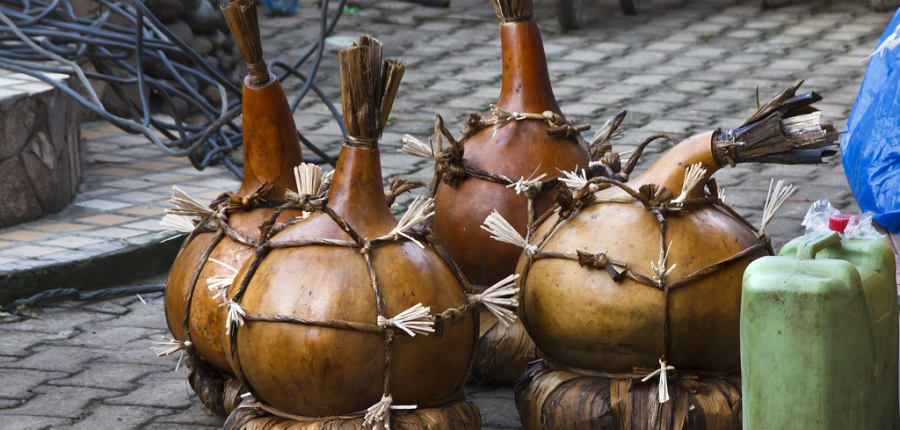
Food
Originally, the staple food of the Banyankole was millet. it had been supplemented with bananas(matooke), potatoes and cassava.
Millet and meat were prepared for important occasions. Potatoes and cassava weren’t respectable foods and unless there was a true shortage of food, they might not be presented to a visitor or to be eaten. it had been rear for a family to eat and finish the entire meal. However, the family head wasn’t alleged to eat leftovers. Besides men and boys were advised to not eat a burnt potato. the rationale was that it had been so sweet that whenever a person remembered its sweetness while on a search or work, he could be tempted to go away his duties and are available back home. Such food was eaten by women and youngsters. the most food of the Bahima was milk ad blood called enjuba. they might, additionally barter potatoes, cassava, and matooke from the agriculturalists in exchange for milk and ghee. In times when there was scarcity, milk would be substituted by blood by the Bahima.
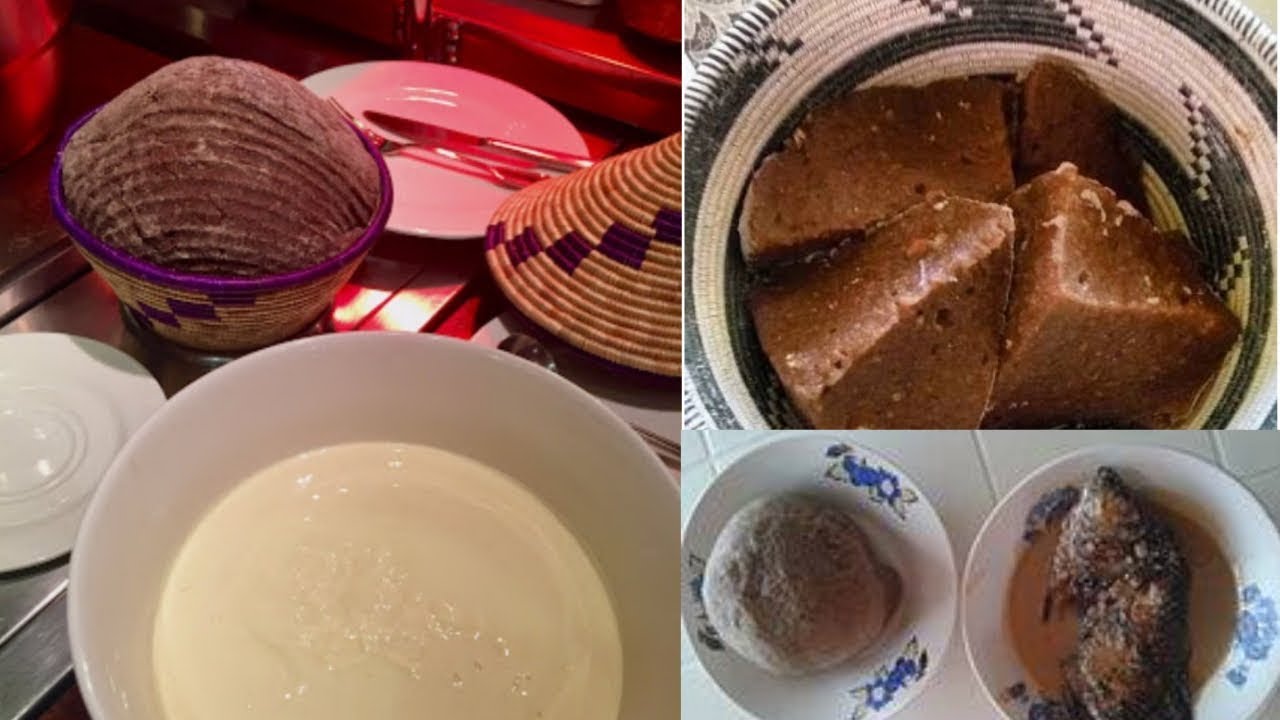
Traditional marriages
The Banyankole have an upscale cultural tradition of marriage called Kuhinjira. this is often a pre-wedding ceremony where the bride’s family exchanges gifts with the groom’s family. This they believe, helps create a special bond between both families. This very tradition was first introduced by the Bafumbira tribe of South western Uganda. The common thread within the Ankole marriage like many African traditional marriages is to make closeness to the bridal family.
This is done through a 3rd party called the Kateraruume (literally meaning somebody who will remove the dew from the path).
Even today when couples choose the official introduction and marriage after they need been cohabiting, this go-between is vital in initiating the wedding negotiations. This takes place with the assistance of a mediator called the Kateraruume.
The Kateraruume may be a highly respected person representing the groom’s interests and is charged with facing the bride’s family and ensuring that the bride’s family is willing to simply accept the groom’s family to formally discuss the wedding .
In case the proposal is endorsed, the groom’s family approaches the bride’s family with the Kateraruume leading them there.
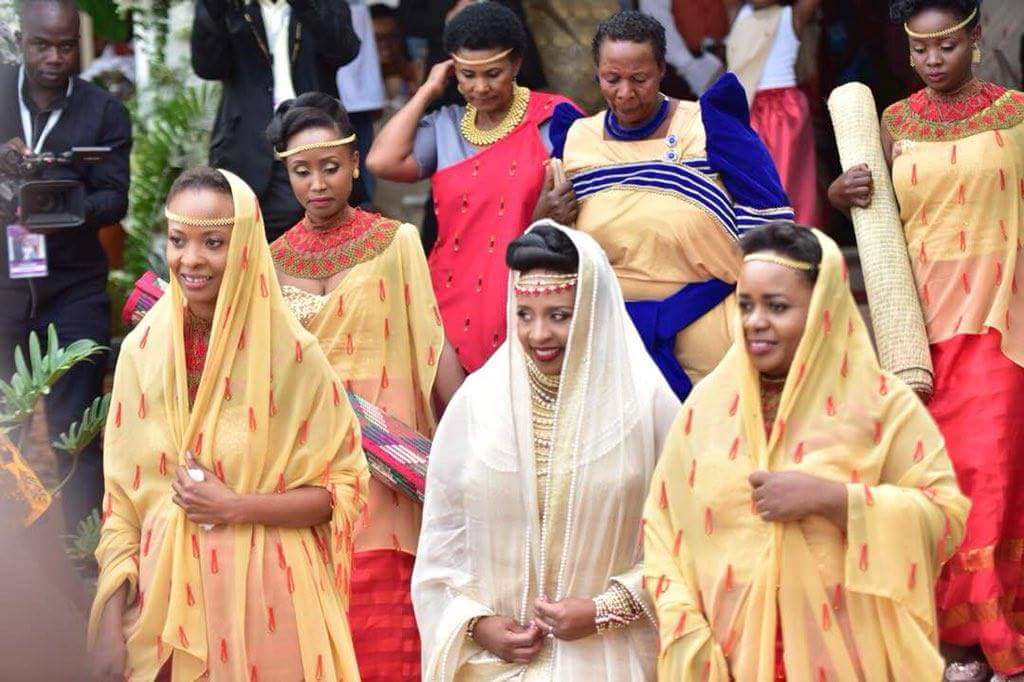
At the bride’s home, the Kateraruume is invited in with the groom entourage after some teasing. The entourage usually comes with beer after which the Kateraruume then indicates to the girl’s marriage panel that he’s on a wedding mission.
The Kateraruume then explains his mission and is asked many questions by the girl’s family. Later, they discuss the wedding payments, which may be picked any time after the 2 families have agreed, sometimes thereon same day.
After both families are in agreement, marriage preparations follow. In Ankole tradition, the wedding payment includes cattle, which can re-evaluate and above 10. These gifts are presented to the bride’s family symbolizing the power and willingness of the groom to require care of his woman.
During the Kuhinjira ceremony, the bride and therefore the groom aren’t party to the discussions. The bride is typically hidden while the groom has got to shut one’s mouth throughout the discussions and await the result . during this case, however, the groom-to-be is ‘king’ because everything is completed on his behalf.
The Ankole people have Mishanana as their cultural wear or Bussuti which they placed on during the Kuhinjira. the women placed on Bussuti whereas the lads placed on Kanzus and that they add a cow hide on top of it. They even have their drums that are used during the normal ceremonies.
Birth and Naming ceremony of the Banyankole
Like most traditions in Uganda, once a lady got pregnant and was due for birth, she was always sent to her mother’s home where they might easily get help.
After birth, the mother would be confined for days and this confinement was mentioned as ekiriri. If she gave birth to a boy, confinement would take four days and if a woman , it might take three days. The name given to the kid usually trusted the private experiences of the oldsters , the time of birth, day of week, ancestral name of place of birth. The name choices were usually given by the daddy , mother or grandfather. However, the father’s choice usually prevailed.
The names often portrayed the state of mind of the one that did the naming. as an example , among the Banyoro, if the kid was named Kaheeru, it portrayed the very fact that the daddy of the kid suspected the mother for practicing adultery. In Ankole region, it had been also considered normal for a wife to possess extra marital affairs together with her in-laws and even have children with them.
Death in Ankole
The Banyankole didn’t believe that death occurred naturally. The had a belief that death occurred thanks to certain aspects like misfortunes, witchcraft or spite of the neighbors. After death of a member, they victims often consulted a sorcerer to seek out out who was liable for the death of their beloved.
After death, a corpse would normally stay indoors in order that the whole family and every one relatives would be present for burial. Amongst the Bairu, the corpse would be buried within the plantation or compound of the family. The Bahima would bury during a kraal. The families within the kingdom would usually bury the dead with the bodies facing the east and burial ceremonies happened within the afternoon. A deceased man was laid to rest on his right while a lady would be laid on her left.
After burial, the lady left behind would be granted three days of mourning while the person was granted four mourning days. Neighbors and relatives of the deceased would camp and sleep reception to comfort the victims left behind. During this era , nobody was allowed to farm or do any manual work for it had been believed that this is able to anger the gods who would ravage hail storms onto the village. Anyone who did that might even be considered a witch and be suspected of being liable for the death of the deceased.
Suicide was highly despised amongst the Banyankole. it had been considered a taboo. Burial for people that committed suicide was very complex. The body was buried with charms and sometimes , the body wasn’t to be touched. The body was cut from a tree where it might fall directly into the grave which had been dug. it’s believed that whoever cut the rope would soon die.
Ankole Royal Regalia.
The Ankole kingdom was made from drums and spear that constituted the royal regalia. The drum was the most element of the regalia and it had been called Bagendanwa. This drum was believed to possess been made by the last Muchwezi ruler, King Wamala. The drum was only used on occasions when a replacement King was coroneted. it had been stored in an open hut that was considered special and it had been a taboo to possess the hut closed. a fireplace was always kept burning for the Bagendanwa and therefore the fire could only be put call at the event that the king died. it had been customary for the Bagendanwa to have cows and other drum to accompany it. The drums were: kabembura, Nyakashija, Eigura, kooma and Njeru ya Buremba. These were got from the Bulimia Kingdom.
